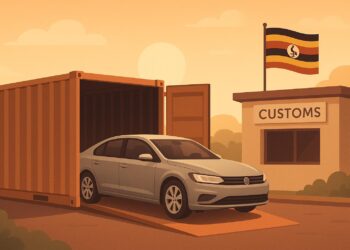The transition to electric vehicles (EVs) is no longer a futuristic dream—it’s a global reality rapidly gaining momentum, especially here in Uganda. With rising fuel costs and a growing focus on sustainability, many Ugandan motorists are asking: Is now the right time to switch from my reliable petrol car to a fully electric model?
This guide breaks down the essential factors, costs, and practical steps for Ugandan drivers considering the shift to e-mobility. We’ll look beyond the hype and give you the concrete details you need to make an informed decision.
1. The Financial Calculation: Where are the Savings?
The most common hurdle for new EV buyers is the high upfront cost. However, a full cost-benefit analysis shows the long-term savings are significant, especially with Uganda’s relatively low electricity tariffs.
Lower “Fuel” Costs
- Petrol Cars: A typical petrol car in Uganda can cost over UGX 400,000 to fill up for a significant range.
- Electric Vehicles (EVs): Charging an EV for the equivalent distance (around 300km) can cost between UGX 15,000 and UGX 20,000 when charging at home during off-peak hours. This translates to an estimated 70% saving on running costs.
Reduced Maintenance
EVs have far fewer moving parts than traditional internal combustion engine (ICE) cars. There are no oil changes, spark plugs, exhaust systems, or transmission fluid flushes. This dramatically lowers routine maintenance costs. You’ll primarily focus on tyres, brakes (which last longer due to regenerative braking), and the battery.
Actionable Tip: Even with lower maintenance, always use a certified mechanic for your EV’s battery and electronic systems.
2. Navigating the EV Market in Uganda
While the market for second-hand petrol cars is vast, the EV landscape is rapidly evolving. You have three main paths to acquiring an EV: importing, buying local, or converting your current car.
New and Used EV Imports
The majority of electric cars in the market are imported. Popular, budget-friendly choices often include models like the used Nissan Leaf or the newer BYD Dolphin/Seagull.
Important Note on Imports: As of the 2024/2025 fiscal year, the Ugandan government reinstated a 25% import duty on fully electric vehicles. This significantly increases the final cost, so budgeting for this tax is crucial.
For drivers looking to explore sustainable mobility and bypass local market limitations, EV24.africa offers transparent import options for new and used electric cars, expanding choices for Ugandans looking for specific makes and models.
Local Assembly
Uganda is a pioneer in e-mobility with local initiatives like Kiira Motors Corporation, which assembles EVs that are often exempt from import duties, offering a more affordable option for those looking to buy locally.
Conversion Kits
Some businesses now offer the service of converting your existing petrol car to an EV by replacing the engine with an electric motor and battery pack. This process can cost between $25,000 and $45,000 for larger vehicles like Land Cruisers, but lightweight conversion kits for smaller cars are becoming more affordable.
3. The Big Question: Charging and Range Anxiety
Range anxiety—the fear of running out of charge—is the most common concern for new EV owners. However, a little planning goes a long way.
Charging Infrastructure (Getting Power)
The charging network in Kampala and other urban centres is growing. Public charging stations equipped with DC fast chargers are being installed, allowing vehicles to top up in a fraction of the time.
- Home Charging (The Best Option): For most Ugandans, installing a dedicated 240V Level 2 charger at home is the most convenient and cost-effective solution. This allows you to “fuel up” overnight, just as you charge your phone.
- Battery Swapping: For the fast-growing electric motorcycle (e-boda) market, companies like Spiro are setting up extensive battery swapping networks, which eliminates charging downtime entirely.
Practical Tip: Most Ugandans drive less than 50km daily. An EV with a real-world range of 200-250km is more than enough for city commutes and most inter-city travel.
4. Key Considerations for the Ugandan Driver
Switching from an ICE car to an EV in a local context has unique factors you must consider.
Battery Life and Road Conditions
EV batteries are robust, but extreme heat and rough roads can impact their performance and lifespan. Manufacturers typically offer a warranty of 8 years/160,000 km.
- Tyres and Suspension: Because EVs are heavy due to their battery packs, their suspension and tyres take more strain on rough terrain. Choosing models with higher ground clearance is advisable.
- Buying Second-Hand: When purchasing a used EV, the most critical factor is the State of Health (SoH) of the battery. Ensure the battery capacity is still over 80% to guarantee a usable range.
If you are looking for other dependable second-hand cars on the local market that are known for their ruggedness in East Africa, like the Toyota Hilux, Toyota Harrier, or Suzuki Escudo, check out auto24.ug to see what’s available for purchase.
Insurance and Paperwork
It is essential to inform your insurance provider about your car’s conversion or import, as an EV’s value and components (especially the battery) are different from a petrol car. You will need specialised EV insurance coverage.
5. Beyond the Car: A Cleaner Future
The switch to electric is a crucial step towards reducing urban air pollution and our collective carbon footprint. Uganda’s reliance on hydropower means our electricity grid is relatively clean, making an EV an environmentally superior choice here compared to many other countries.
To explore more about the local automotive scene, including reviews and tips relevant to East African drivers, you can read more here on carkibanda.com. You can also discover additional tips on maintenance and new model reviews on the automag.ug website.
The move to electric mobility requires research and a shift in perspective, but the long-term rewards—both financial and environmental—are undeniable.




